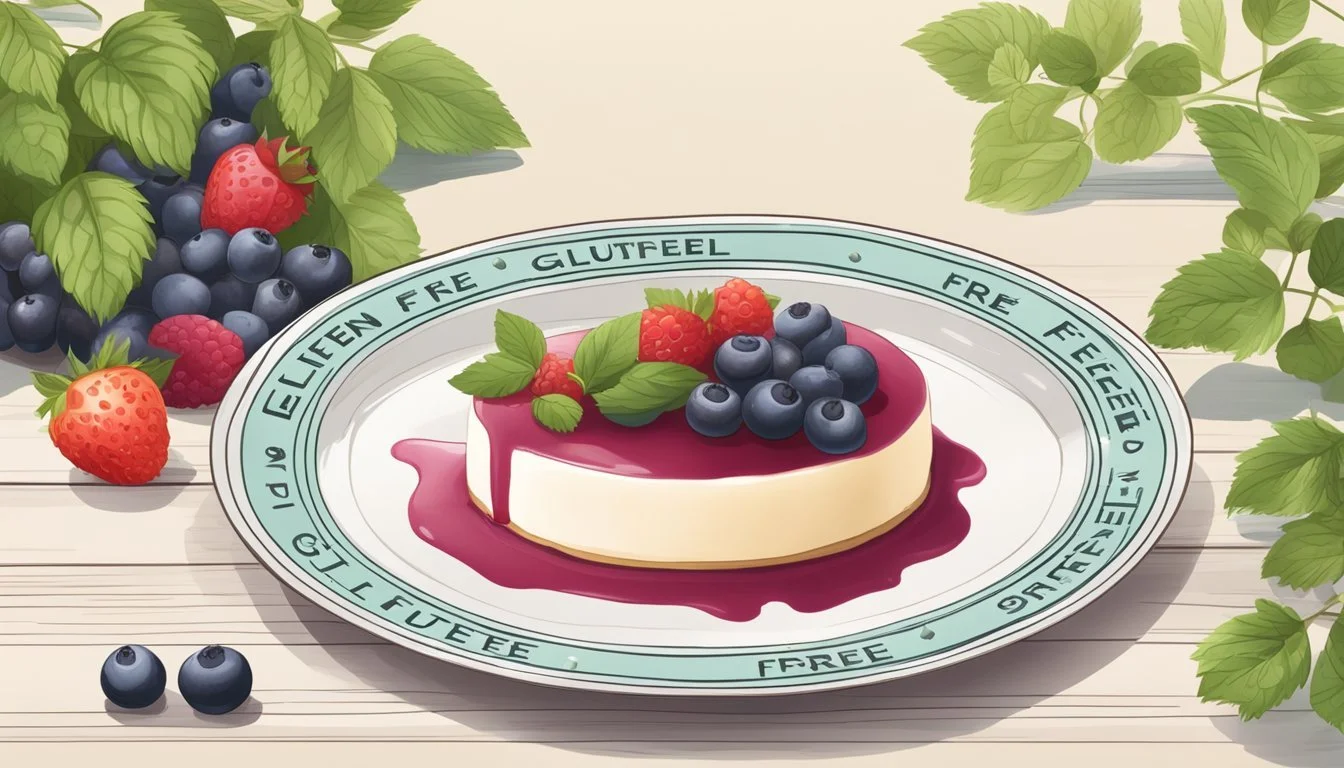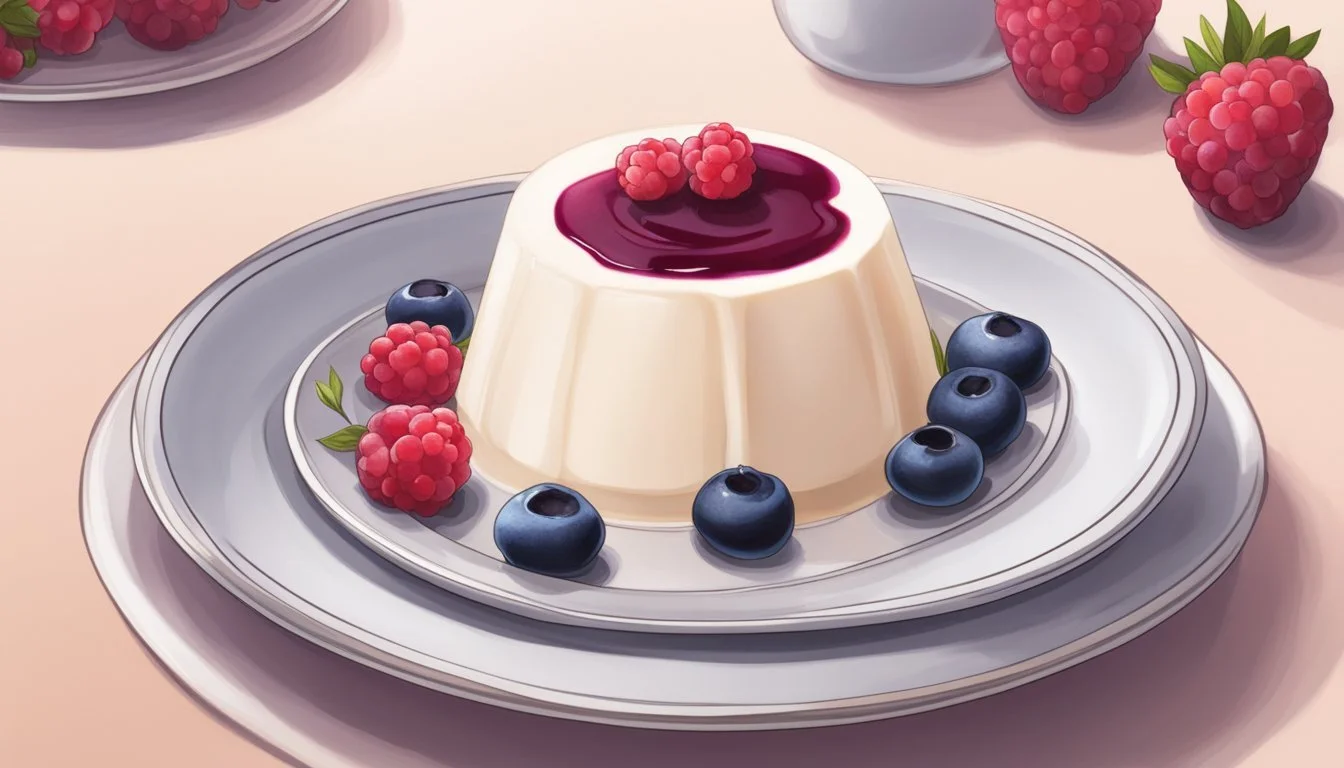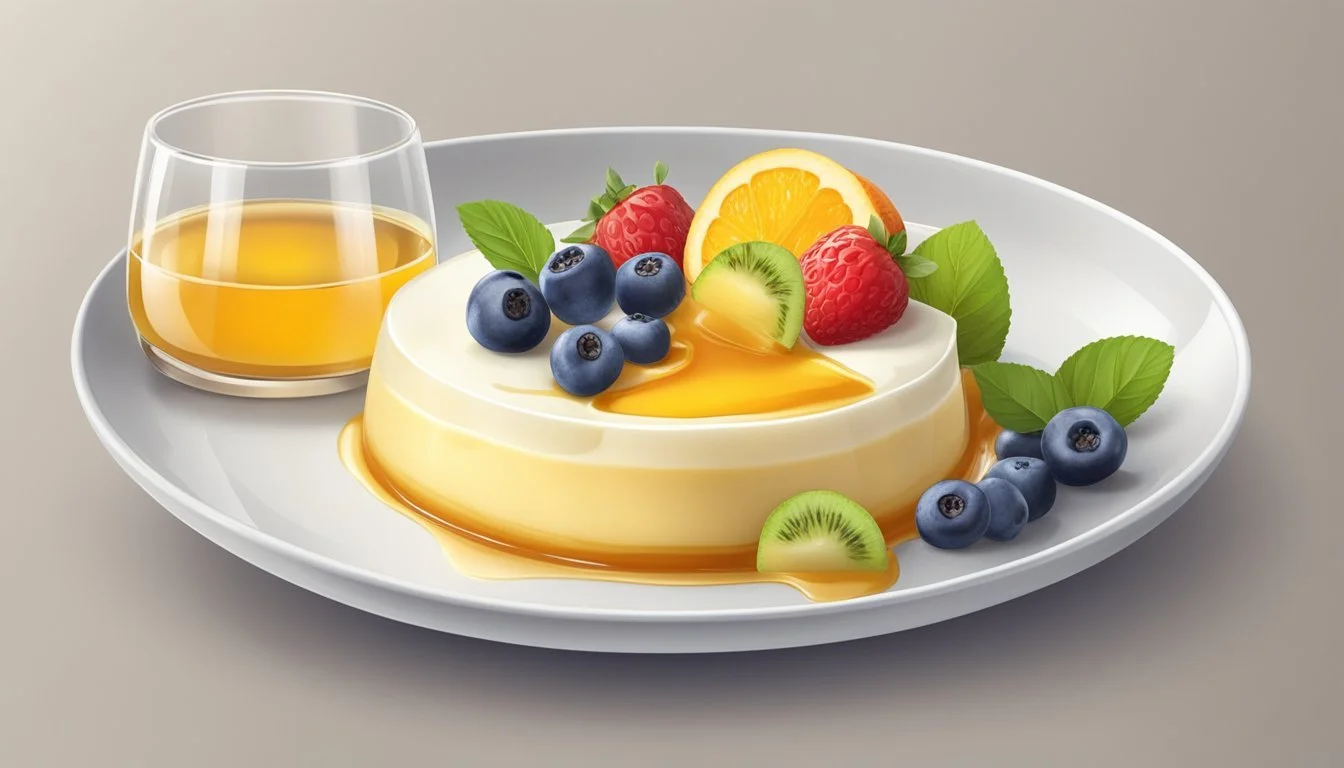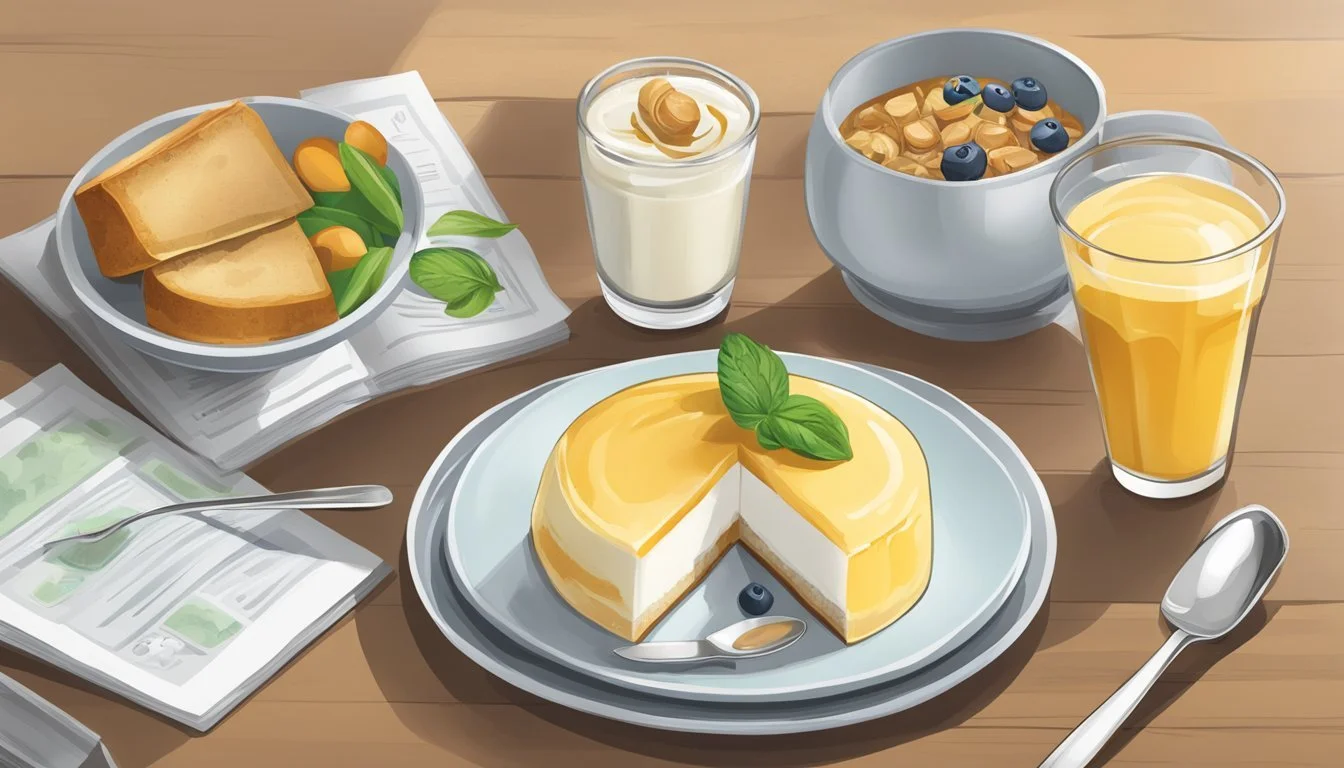Is Pannacotta Gluten-Free?
Understanding Its Ingredients and Preparation
Panna cotta, an iconic Italian dessert known for its creamy texture and delicate flavour, has become a favourite among dessert lovers. Traditional panna cotta is made using a combination of dairy, sweeteners, and gelatin to create a custard-like consistency that can be enhanced with various flavorings. Its simplicity and versatility not only make it a classic endnote to an Italian meal but also an adaptable dessert for those with dietary restrictions.
For individuals adhering to a gluten-free diet, panna cotta is an excellent choice. Since the classic recipe does not require flour or any grain-based thickeners, panna cotta is inherently free of gluten. The gelatin, which provides the firm yet yielding texture, is also gluten-free. This makes panna cotta a safe and appealing option for those who are either sensitive to gluten or have celiac disease.
However, it is essential to consider the individual ingredients used in every variant of the dessert. Gluten can be found in some additives or flavorings, so one should always verify that each component, including toppings and garnishes, is certified gluten-free. Due to the minimalistic nature of the traditional panna cotta recipe, ensuring a completely gluten-free dessert is relatively straightforward, and it allows those with dietary restrictions to indulge without concern.
What is Panna Cotta?
Panna cotta, an Italian dessert known for its creamy texture and delicate wobble, has origins in Italy and is often made gluten-free. The dessert's versatility allows for multiple flavorings and presentations, making it a favorite in both casual and fine dining.
Historical Context
Panna cotta, meaning "cooked cream" in Italian, is a traditional dessert from Northern Italy. Historical recipes have mentioned simmering cream with fish bones to use the collagen as a setting agent, predating the modern use of gelatin.
Basic Ingredients
The fundamental composition of panna cotta includes cream, milk, sugar, and gelatin to create its signature texture. Flavor is traditionally imparted with vanilla, but various other flavorings can be used.
The Textural Appeal
What sets panna cotta apart is its texture. It should possess a creamy consistency with a soft jiggle, achieved by correctly balancing the proportion of liquid to gelatin. The result is a dessert that's firm enough to hold its shape yet melts in your mouth.
Diverse Variations
Panna cotta serves as a canvas for diverse flavors, ranging from vanilla panna cotta to chocolate, coconut and fruit variations like lemon, raspberry, strawberry, and blackberry. Layered desserts (What wine goes well with desserts?), such as layered blackcurrant panna cotta or lavender blackberry panna cotta, add visual appeal and complex taste profiles.
Serving Suggestions
Presentation is key with panna cotta. Serve chilled on a serving plate and often inverted from its mold. It can be decorated with fresh fruit, berries, berry coulis, or a compote to enhance both flavor and appearance.
Panna Cotta as a Snack or Fine Dining Dessert
Panna cotta's versatility extends to its serving context; it can be enjoyed as a simple snack or elevated as a sophisticated dessert in fine dining. Its simplicity belies the elegance it can bring to the conclusion of a meal.
Gluten-Free Concerns
When exploring whether panna cotta is gluten-free, it is essential to understand what gluten is, where it is commonly found, and how panna cotta fits within a gluten-free diet, especially for individuals with celiac disease.
Defining Gluten
Gluten refers to a group of proteins found in certain grains, including wheat, barley, and rye. It acts as a binder that gives dough its elasticity and bread its chewy texture. Gluten is often a concern for individuals diagnosed with celiac disease or gluten sensitivity, as it can cause adverse health effects when ingested by those affected.
Common Sources of Gluten
Common sources of gluten include, but are not limited to:
Bread and baked goods
Pasta and cereals
Beers and malt beverages
Soups and sauces, as a thickening agent
Accidental cross-contamination during food processing can also introduce gluten into otherwise gluten-free products, which is why certification and careful food preparation practices are crucial for a gluten-free diet.
Why Panna Cotta Can Be Naturally Gluten-Free
Panna cotta, an Italian dessert consisting mainly of cream, sugar, and gelatin, can be naturally gluten-free since none of these core ingredients contain gluten. Here is a basic outline of the ingredients involved:
Cream: Gluten-free
Sugar: Gluten-free
Gelatin: Gluten-free
However, in cases where flavorings or toppings are added, one must ensure these additions do not contain gluten. For instance, using a gluten-free vanilla extract is advised over using malt-based extracts. When panna cotta is prepared with such care, it is a suitable dessert option for individuals with celiac disease or those following a gluten-free diet. Always double-check product labels or recipes to ensure a truly gluten-free experience.
Making Gluten-Free Panna Cotta
Panna Cotta is a classic Italian dessert that can be made gluten-free with careful selection of ingredients and substitutes. This section will guide you through the process, from choosing the right components to presenting the final dish beautifully.
Choosing the Right Ingredients
To ensure the Panna Cotta is gluten-free, one must use ingredients that do not contain gluten. Traditional Panna Cotta recipes call for cream, milk, sugar, and gelatin or agar agar; all naturally gluten-free. It's essential to check that any added flavorings or garnishes, such as vanilla extract or chocolate, are certified gluten-free to avoid cross-contamination.
Substitutes for Dietary Restrictions
Dairy products are a staple in Panna Cotta, but for a dairy-free or vegan version, one can substitute the cream and milk with coconut milk or almond milk. Gelatin, which is animal-derived, can be replaced by plant-based agar agar or vegetarian gelatin options to cater to vegetarian and vegan diets.
Step by Step Instructions
Prep Time: Begin by gathering all utensils and ingredients. You'll need a saucepan, whisk, and molds for shaping the Panna Cotta.
Combine the milk, sugar, and gelatin or agar agar in a saucepan, letting the gelatin bloom for about 5 minutes.
Heat the mixture gently, stirring until the sugar and gelatin dissolve.
Once dissolved, add the cream and bring to a simmer without boiling, then remove from heat and stir in vanilla extract or other flavorings.
Pour the mixture into molds and let them cool before chilling in the refrigerator for 4-6 hours or overnight.
Flavor Variations and Additions
Panna Cotta is versatile when it comes to flavors. One can infuse the cream with vanilla beans, chocolate, or coffee, or add fruit purees like mango or berry. To add a zesty twist, incorporate lemon juice or coconut for a tropical feel. These additives should be stirred into the cream mixture before it sets.
Presentation and Garnishing Tips
Once the Panna Cotta has set, they should be carefully unmolded onto a serving plate. To decorate, one might use a blender to make fruit sauces or coulis, or simply garnish with fresh strawberries or berries. A mint leaf or a sprinkle of toasted coconut adds a final touch to the sleek and appealing dessert, ensuring it's as delightful to the eye as it is to the palate.
Nutritional Profile
Panna cotta is a creamy Italian dessert that, when prepared traditionally, has a clear nutritional profile due to its simple ingredients. However, the nutritional content can vary based on recipe modifications and additions.
Calorie Count
A typical vanilla panna cotta serving, weighing approximately 145 grams (or 5 ounces), contains around 300 to 400 calories. This range can fluctuate depending on the use of full-fat or reduced-fat dairy, and the amount of added sugars.
Protein Content
Dairy, a primary component in panna cotta, provides a source of protein. One serving can contain between 4 to 6 grams of protein. The exact amount depends largely on the type of milk or cream used.
Fat Variety
Panna cotta's rich texture comes from its fat content, usually from cream and milk. The fat can be saturated or unsaturated, with most servings containing a higher proportion of the former. A typical serving can offer 20 to 25 grams of total fat, with the majority being saturated fat.
Saturated Fat: High, due to dairy
Unsaturated Fat: Lower, present in small amounts
Carbohydrates and Dietary Fiber
The carbohydrate content in panna cotta primarily stems from sugars used for sweetening. A serving contains roughly 20 to 30 grams of carbohydrates. As a dairy-based dessert devoid of grains, it naturally contains little to no dietary fiber.
Special Dietary Considerations
When adapting panna cotta to meet specific dietary needs, one must consider alternatives for dairy, ways to reduce sugar and calories, and options to enhance the protein content while possibly reducing carbs. These specifics ensure that the dessert can be tailored to diverse nutrition profiles and restrictions without compromising on taste.
Dairy-Free Options
Traditional panna cotta contains dairy components; however, substitutions like coconut milk or almond milk serve as excellent dairy-free alternatives and can make the dessert vegan-friendly as well. For instance:
Coconut milk: Imparts a rich, tropical flavor and creamy texture.
Almond milk: Provides a nutty undertone and is lighter in consistency.
Reducing Sugar and Calories
Panna cotta's sweetness mainly comes from added sugars such as white or brown sugar. A mindful approach to reduce sugar and calories includes:
Using sweeteners like stevia in place of sugar.
Moderating portion sizes to keep calorie count in check.
Protein-Rich and Low-Carb Choices
Incorporating high-protein ingredients that are low in carbohydrates can transform panna cotta into a more balanced dessert option. Choices include:
Adding protein powders that also help in setting the dessert.
Opting for sugar-free and low-carb sweeteners to maintain the desired flavor profile while reducing carb intake.
Shopping Guide for Ingredients
When preparing gluten-free panna cotta, selecting high-quality ingredients is crucial for both taste and dietary needs. Making informed choices about where to purchase these ingredients can greatly influence the final outcome of this classic dessert.
Selecting Premium Quality Ingredients
To ensure the best flavor and texture for panna cotta, one should choose double cream and whole milk for their rich content. Caster sugar dissolves more readily than granulated sugar, giving a smoother finish. For the characteristic vanilla flavor, opt for a vanilla bean or vanilla bean paste over extract for a more authentic taste. The key ingredient for setting the dessert is gelatine or gelatine leaves; be sure to verify that it is gluten-free.
Cream: Look for double cream, known for its high fat content, which lends a creamy consistency.
Milk: Whole milk is preferable for a rich taste.
Sugar: Caster sugar is ideal for its fine granules.
Vanilla: Authentic vanilla bean or high-quality vanilla bean paste is recommended.
Gelatine: Use certified gluten-free gelatine leaves or powder to ensure it complies with dietary restrictions.
Online Retailers and Supermarket Tips
Buying ingredients for gluten-free panna cotta can be convenient and often more cost-effective through online retailers like Amazon or specialty food services like Thrive Market. These platforms offer a wide range of options, including organic and gluten-free choices. When visiting supermarkets, check products for gluten-free labels, and don't hesitate to ask for assistance if you're unsure about a product's content.
Table of Online Retailers:
Retailer Product Range Note Amazon Wide selection of vanilla bean, gelatine, and more. Check for gluten-free options. Thrive Market Specializes in organic and gluten-free ingredients. Membership-based for exclusive discounts.
By following these guidelines, one can confidently shop for the necessary ingredients to create a gluten-free panna cotta that is delicious and safe for those with dietary restrictions.
Storage and Shelf Life
Proper storage of panna cotta not only preserves its taste but also extends its shelf life. Utilizing appropriate containers, temperatures, and techniques ensures that this dessert can be safely enjoyed at a later time.
Best Practices for Storing Panna Cotta
When storing panna cotta, one should keep it in the refrigerator, covered by a lid or plastic wrap to prevent it from absorbing other flavors and drying out. An airtight container is ideal for maintaining freshness and integrity of the dessert. Panna cotta should be stored promptly after preparation or serving to reduce the risk of bacterial growth.
Freezing and Thawing Techniques
Panna cotta can be frozen for an extended period. It should be placed in an airtight container or wrapped carefully in plastic wrap before being stored in the freezer. When thawing frozen panna cotta, it's important to do so in the refrigerator to ensure a gradual temperature change, maintaining texture and preventing food safety issues.
Shelf Life and Safety
The shelf life of panna cotta in the refrigerator is typically around 4 to 5 days when stored properly. If the dessert has been frozen, it can last up to 3 months. Regardless of the storage method, one should always inspect the panna cotta for any signs of spoilage, such as an off smell or appearance, before consumption to ensure food safety.
Serving and Presentation
The proper serving and presentation of Panna Cotta not only enhances its visual appeal but also can heighten the overall dining experience. Selecting the appropriate molds, mastering unmolding techniques, and adding creative decorative touches are all essential facets to serving this classic dessert.
Choosing the Right Molds and Plates
One should select molds for Panna Cotta that complement the serving plate, as the right combination accentuates the dessert's elegance. Silicone moulds are a popular choice due to their flexibility, which aids in easier unmolding. However, for a more traditional appearance, glass or plastic molds may also be used. It's important to ensure that the chosen mold size fits well with the serving plate to maintain balance and visual appeal.
Unmolding Techniques
The technique of unmolding Panna Cotta is crucial for presentation. One common method involves briefly dipping the bottom of the molds in warm water to loosen the dessert. Then, one can gently shake the mold to release the Panna Cotta onto the plate. Another approach is to run a small, sharp knife along the edge of the mold to help detach it before inverting onto the serving plate.
Creative Decorating Ideas
Decoration elevates Panna Cotta from a simple dessert to a culinary showpiece. One can decorate with berry coulis for a vibrant splash of color, or arrange fresh raspberries and blackberries atop the dessert for a natural contrast. For a dairy-free option, consider using coconut milk in the recipe and garnishing with tropical fruits. For added texture contrast, a fruit compote pairs well with the creamy Panna Cotta, offering both a visual and taste complement.
Affiliate Marketing Opportunities
For individuals exploring the niche market of gluten-free products, such as pannacotta, affiliate marketing presents a fruitful avenue. Marketers can leverage the increasing demand for gluten-free options, partnering with companies that offer these products, and creating engaging content to drive sales.
Affiliate Programs and Partnerships
Affiliates have a variety of programs to choose from including those from Amazon Associates, where one can promote gluten-free pannacotta mixes or related cooking products. It's important to select programs that offer competitive commissions and have a reputation for quality. Pannacotta, being a specialty dessert, may find better-suited partnerships with gourmet or specialized health food brands that offer higher payouts for niche products.
Creating Content for Monetization
A successful method for monetization is through blogging or producing tutorial videos. Content creators can craft pannacotta recipes or instructional guides and incorporate affiliate links within the content. This approach not only adds value to the reader or viewer but also generates revenue through clicks and subsequent purchases. It is essential to create transparent and valuable content to build trust with the audience.
Blog posts: In-depth recipe guides or pannacotta flavor reviews.
Videos: Step-by-step cooking tutorials showcasing gluten-free pannacotta preparation.
Legal and Ethical Considerations
Affiliates are required to adhere to legal standards by including disclosures about their use of affiliate links. A clear disclaimer should inform readers that the creator may receive commissions for purchases made through links. This practice ensures transparency and maintains the integrity of the affiliate while complying with FTC guidelines. Ethical practices also involve providing honest recommendations and reviews to maintain credibility with one's audience.
Frequently Asked Questions
In this section, readers will find pertinent information organised into specific areas of interest regarding panna cotta, particularly focusing on its gluten-free aspect, adaptation for different diets, and storage recommendations.
General Panna Cotta Questions
Panna cotta, an Italian dessert known for its silky texture, traditionally consists of cream, sugar, and gelatine, which is gluten-free. Gelatine, a key ingredient, is derived from animal collagen and is used to set the panna cotta into its characteristic form.
Gluten-Free Concerns Addressed
Those with celiac disease or a gluten sensitivity can typically enjoy panna cotta without worry, as it does not contain gluten by default. However, it is imperative to check for cross-contamination if it's prepared in kitchens where gluten-containing items are also made.
Is panna cotta gluten-free?
Yes, traditional recipes are gluten-free.
Can individuals with celiac disease eat panna cotta?
Yes, provided there's no cross-contamination.
Dietary Substitution Queries
Panna cotta offers flexibility with substitutions to cater to various dietary requirements. For a dairy-free or vegan version, one can substitute cream with full-fat coconut milk and use agar agar instead of gelatine.
Can panna cotta be made dairy-free?
Yes, with alternatives like coconut milk.
Is there a vegan substitute for gelatine?
Agar agar is a plant-based gelatine substitute.
Storage and Consumption Inquiries
Panna cotta should be refrigerated and can be stored for up to five days. It is best served chilled and firm to the touch. Ensure proper storage to maintain its quality and safety.
What is the shelf life of panna cotta?
Properly stored, it can last up to five days in the refrigerator.
How should panna cotta be consumed?
It should be eaten chilled for the best texture and flavor profile.
Conclusion
Panna cotta, an Italian dessert known for its smooth texture and simplicity, is traditionally gluten-free. The basic ingredients—milk, cream, sugar, and gelatin—are inherently without gluten. However, diners should be cautious as some recipes or restaurant versions may incorporate additives or accompaniments that contain gluten.
For those seeking a gluten-free option, panna cotta can indeed serve as the perfect dessert. Its versatility allows for a range of flavors and it can easily be adapted to suit dietary restrictions without compromising on taste or presentation.
Key considerations for ensuring a gluten-free panna cotta include:
Verifying the purity of the ingredients, specifically any flavorings or garnishes.
Consulting with restaurants to confirm that their panna cotta is free of gluten-containing ingredients.
Preparing at home allows full control over the ingredients ensuring the dessert remains gluten-free.
Many recipes and restaurants are keen to accommodate the increasing demand for gluten-free desserts, often highlighting panna cotta as a safe choice for gluten-sensitive diners.
In summary, panna cotta can maintain its status as a luxurious and inclusive dessert option, suitable for a wide audience when prepared with attention to its gluten-free integrity.










